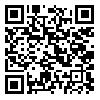دوره 13، شماره 4 - ( 7-1404 )
جلد 13 شماره 4 صفحات 302-289 |
برگشت به فهرست نسخه ها
Download citation:
BibTeX | RIS | EndNote | Medlars | ProCite | Reference Manager | RefWorks
Send citation to:



BibTeX | RIS | EndNote | Medlars | ProCite | Reference Manager | RefWorks
Send citation to:
Taksande A, Taksande A, Malik A. Pediatric Strokes: Types, Risk Factors, Symptoms, Treatments, and Diagnosis. J. Pediatr. Rev 2025; 13 (4) :289-302
URL: http://jpr.mazums.ac.ir/article-1-626-fa.html
URL: http://jpr.mazums.ac.ir/article-1-626-fa.html
Pediatric Strokes: Types, Risk Factors, Symptoms, Treatments, and Diagnosis. Journal of Pediatrics Review. 1404; 13 (4) :289-302
چکیده: (419 مشاهده)
Background: Pediatric strokes, or acute cerebrovascular events in children aged 28 days to 18 years, are serious medical conditions that can result in substantial morbidity and mortality.
Objectives: This study aimed to review the types, risk factors, symptoms, treatments, and diagnosis methods of pediatric strokes.
Results: Strokes in children can be categorized into various groups based on their specific characteristics; whether the stroke is ischemic or hemorrhagic, whether it affects the arterial or venous systems, and whether it involves the anterior or posterior circulation of the brain. Ischemic strokes may stem from arterial blockages or venous sinus thrombosis, while hemorrhagic strokes are typically caused by spontaneous bleeding within the brain tissue or subarachnoid space. In younger children, symptoms are often nonspecific, making early recognition challenging. Magnetic resonance imaging (MRI), especially with diffusion-weighted sequences, is essential for promptly identifying ischemic strokes. Accurate and timely diagnosis relies heavily on clinical awareness. Currently, treatments such as tissue plasminogen activator (tPA) and mechanical thrombectomy are not routinely recommended in pediatric cases due to insufficient evidence supporting their safety and effectiveness.
Conclusions: Pediatric healthcare providers must be familiar with the wide range of potential causes and complications associated with stroke in children.
Objectives: This study aimed to review the types, risk factors, symptoms, treatments, and diagnosis methods of pediatric strokes.
Results: Strokes in children can be categorized into various groups based on their specific characteristics; whether the stroke is ischemic or hemorrhagic, whether it affects the arterial or venous systems, and whether it involves the anterior or posterior circulation of the brain. Ischemic strokes may stem from arterial blockages or venous sinus thrombosis, while hemorrhagic strokes are typically caused by spontaneous bleeding within the brain tissue or subarachnoid space. In younger children, symptoms are often nonspecific, making early recognition challenging. Magnetic resonance imaging (MRI), especially with diffusion-weighted sequences, is essential for promptly identifying ischemic strokes. Accurate and timely diagnosis relies heavily on clinical awareness. Currently, treatments such as tissue plasminogen activator (tPA) and mechanical thrombectomy are not routinely recommended in pediatric cases due to insufficient evidence supporting their safety and effectiveness.
Conclusions: Pediatric healthcare providers must be familiar with the wide range of potential causes and complications associated with stroke in children.
نوع مطالعه: Narrative Review |
دریافت: 1403/2/10 | پذیرش: 1404/7/26 | انتشار: 1404/7/26
دریافت: 1403/2/10 | پذیرش: 1404/7/26 | انتشار: 1404/7/26
| بازنشر اطلاعات | |
 |
این مقاله تحت شرایط Creative Commons Attribution-NonCommercial 4.0 International License قابل بازنشر است. |





